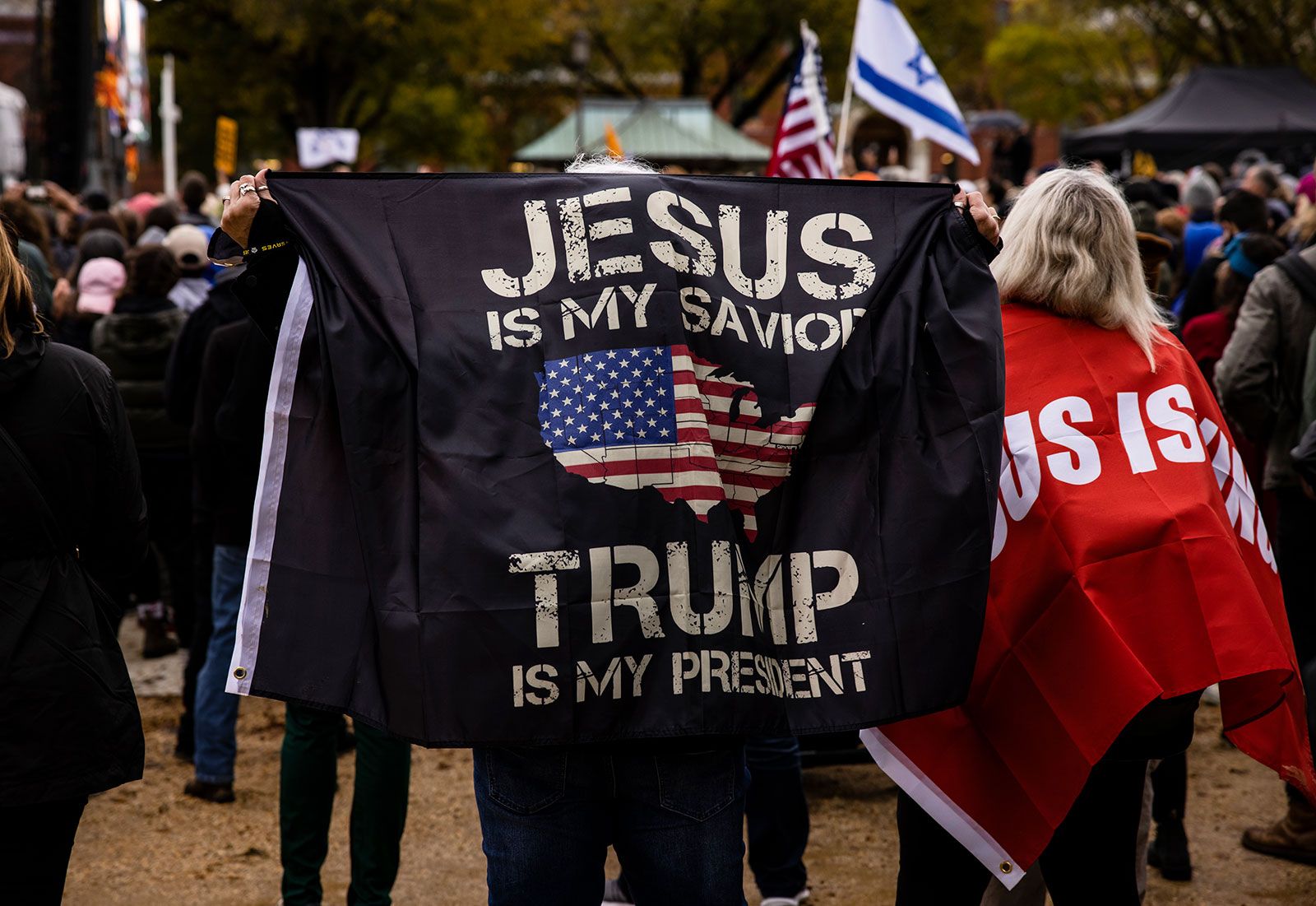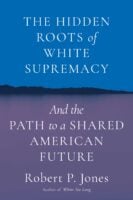
The Origins of White, Christian Supremacy
Can 15th-century doctrine explain today's culture wars?

America is undergoing an identity crisis, author Robert P. Jones writes. As revealed in recent studies by Jones’s research organization, Public Religion Research Institute, dramatic demographic shifts have rendered once-dominant white Christians a minority; the nation is more ethnically, culturally, and religiously diverse. So it’s no surprise we find ourselves embroiled in bitter debates over who we truly are.
Many in Texas still insist (despite historical evidence) that we’re a Christian nation, founded by godly (white) men. Countering this mythos, the 1619 Project locates the nation’s genesis in the year Africans were first brought against their will to Great Britain’s American colonies, framing our subsequent history as one of stubbornly systemic racism.
In the new book, The Hidden Roots of White Supremacy and the Path to a Shared American Future, Jones offers an intriguing alternative, which analyzes our racist and violent past and suggests a path to a more pluralistic democracy.

Robert P. Jones
Simon & Schuster
September 2023
Though he applauds the 1619 Project, Jones argues that it neglects Europeans’ prior violence toward Indigenous peoples and “obscures the headwaters” of European colonialism. Jones locates those headwaters in the late 1400s, in the so-called Doctrine of Discovery. Promulgated in papal edicts, this doctrine proclaimed the superiority of Christian civilization and authorized Europeans to claim ownership of any newly “discovered” lands inhabited by non-Christians. The doctrine became part of U.S. law in an 1823 Supreme Court ruling that held the U.S. government had “an exclusive right to extinguish the Indian title of occupancy.”
Jones views the doctrine as a “Rosetta Stone” for understanding the “sense of divine entitlement, of European Christian chosenness, [that] has shaped the worldview of most white Americans.”
To show how whites’ sense of entitlement has played out in America, Hidden Roots examines three localities, each the site of white outrages against African-Americans: the Mississippi Delta, site of the 1955 murder of Emmitt Till; Duluth, Minnesota, where in 1920 a mob of more 10,000 whites lynched three Black men; and Tulsa, Oklahoma, where in 1921, whites descended on the prosperous Black district of Greenwood, burning homes and businesses and killing between 100 and 300 people. In each case, the whites responsible faced little or no punishment.
These atrocities were foreshadowed by earlier white violence in those areas toward Native Americans. A century before Till’s murder, the U.S. government forcibly removed the Choctaw people from the Mississippi Delta, clearing the land for white settlement and a plantation economy exploiting Black slave labor. Jones then shares tales of white depredations against Native Americans in Minnesota and Oklahoma. In 1862, some Dakota people in Minnesota rebelled against white mistreatment and treaty violations. At the end of the five-week uprising, the U.S. government hanged 38 Dakota men after sham military trials, most lasting “only a minute or two,” Jones notes, in the largest mass execution in U.S. history.

As for Oklahoma, Jones writes poignantly of the Osage people, who suffered forced assimilation, violence at the hands of white mobs hungry for their land, and then, after oil was discovered, a “Reign of Terror” in which whites systematically swindled and murdered them.
Yet Hidden Roots speaks of hope as well as horror.
Interracial groups in all three areas are taking steps to confront the legacy of white violence. Thanks to the work of the interracial Emmitt Till Memorial Commission, the Mississippi Delta has seen what Jones—a Mississippi native who previously authored The End of White Christian America—calls “an explosion of cultural memory work” around Till’s legacy. Duluth and Tulsa have seen similar efforts of truth-telling and reconciliation.
Though Hidden Roots doesn’t directly address the Lone Star State, Jones notes that “[e]very U.S. state contains similar legacies of white racial violence, because every … state was built on the same foundation … the conviction that America was divinely ordained to be a new promised land for European Christians.”
How did Christianity, which purports to proclaim God’s loving-kindness to all humanity, end up legitimizing racism and violence?
That’s certainly the case with Texas. Consider, for instance, the Battle of Village Creek, which took place just six miles from my Fort Worth home, not long after the removal of the Choctaw from Mississippi and for much the same reason: white hunger for Native American lands. In 1841, a company of Texan volunteers under General Edward Tarrant attacked an extensive settlement of Caddos, Cherokees, and Tonkawas; burned down huts; then engaged in a running gunfight, killing 12 Native Americans and wounding many more. In the wake of the attack, the tribes were forced to desert the settlement.
Four years before the 1920 Duluth lynchings, Waco saw its own gruesome act of white mob violence when Black teenager Jesse Washington “was beaten, stabbed, mutilated, hanged and burned to death” before thousands of “screaming, cheering spectators.” Viewed through Jones’s historical and religious lens, these Texas atrocities are not isolated acts, but part of a broader legacy of racism with religious underpinnings.
While Hidden Roots explores white supremacy’s origins, it begs another question: How did Christianity, which purports to proclaim God’s loving-kindness to all humanity, end up legitimizing racism and violence?
My book No Longer the Same traces this hypocrisy to Christianity’s long theological tradition of regarding non-Christians as largely ignorant of divine truth. Christianity’s confidence that it alone has “the way, the truth, and the life” has too often resulted in the exclusion and mistreatment of religious others. But such theological questions lie beyond the frame of Hidden Roots.
Instead, Jones’s religio-political perspective offers a compelling picture of who Americans are and where we came from. Thought-provoking, solidly researched, and skillfully written, Hidden Roots is a clear-eyed indictment of white supremacy and its religious foundations, one that can help us make sense of our troubled past and envision possibilities for remembrance and renewal.



